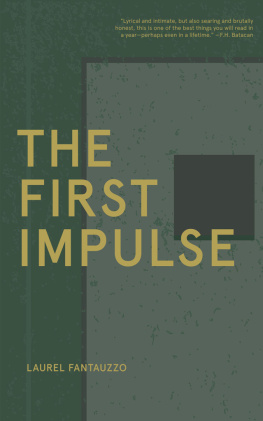
Climbing Mount Laurel
Climbing Mount Laurel
The Struggle for Affordable Housing and Social Mobility in an American Suburb
Douglas S. Massey
Len Albright
Rebecca Casciano
Elizabeth Derickson
David N. Kinsey
Princeton University Press
Princeton and Oxford
Copyright 2013 by Princeton University Press
Published by Princeton University Press, 41 William Street, Princeton, New Jersey 08540 In the United Kingdom: Princeton University Press, 6 Oxford Street, Woodstock, Oxfordshire OX20 1TW
press.princeton.edu
All Rights Reserved
Library of Congress Cataloging-in-Publication Data
Massey, Douglas S.
Climbing Mount Laurel : the struggle for affordable housing and social mobility in an American suburb / Douglas S. Massey, Len Albright, Rebecca Casciano, Elizabeth Derickson, David N. Kinsey.
pages cm
Includes bibliographical references and index.
ISBN-13: 978-0-691-15729-0 (cloth : alk. paper)
ISBN-10: 0-691-15729-4 (cloth : alk. paper) 1. Low-income housingNew JerseyMount Laurel (Township) 2. HousingNew JerseyMount Laurel (Township) 3. Zoning, ExclusionaryNew JerseyMount Laurel (Township) 4. Social mobilityNew JerseyMount Laurel (Township) I. Title.
HD7287.96.U62N552 2013
363.583dc23 2012047549
British Library Cataloging-in-Publication Data is available
This book has been composed in Sabon LT Std and Helvetica Neue
Printed on acid-free paper.
Printed in the United States of America
10 9 8 7 6 5 4 3 2 1
Dedicated to the memory of Ethel R. Lawrence
Contents
Illustrations
Tables
Preface
In a very real way, this book culminates and affirms the vision of Ethel R. Lawrence, who was a founding member of the 1960s-era Springville Community Action Committee of South Jersey and lead plaintiff in the case of South Burlington County NAACP et al. v. Mount Laurel Township et al. This case produced the landmark State Supreme Court decision establishing the Mount Laurel Doctrine within the State of New Jersey. Not only did the decision clearly articulate an affirmative obligation on the part of each municipality to accommodate its fair share of the regional need for affordable housing, it also provided a model for affordable housing litigation and development elsewhere, and offered an inspiration to fair housing advocates throughout the country. Throughout her life, Ethel Lawrence steadfastly defended the right of people to live in whatever community they wished irrespective of color or economic status, and she staunchly believed in the virtues of promoting greater racial and class integration for the benefit of all citizens, not just the poor and the disenfranchised.
This book vindicates the vision of Ethel Lawrence and we are honored to dedicate it to her memory. Although she began working to bring affordable housing to Mount Laurel Township in 1967, and her right to do so was affirmed by the State Supreme Court in 1975 and 1983, the affordable housing development that now bears her name did not open its doors until November 2000, six years after she died. Moreover, until now it has been difficult to assess what effect the opening of the Ethel R. Lawrence Homes had on tenants, neighbors, and township residents, either to vindicate or challenge her original vision of integration and inclusion. In this book we describe the organization, implementation, and results of a special data collection effort implemented in 20092010 to achieve these goals. The Monitoring Mount Laurel Study was funded by a generous grant from the John D. and Catherine T. MacArthur Foundation (Grant No.08-92834-000-HCD) whose purpose was to assess how the opening of the Ethel Lawrence Homes affected the surrounding community and the lives of project residents.
Consistent with Ethel Lawrences vision, in this book we show that an affordable, predominantly minority housing project can be developed within an affluent white suburb to further the goals of racial and class integration without negatively affecting property values, crime rates, or tax burdens in the surrounding community. Indeed, we show that such a project can blend into the wider community to the point where many neighbors do not even know of its existence. We also show that moving into the Ethel Lawrence Homes was achieved without lowering the degree of interaction that residents had with friends and relatives, and without sacrificing access to daily needs and critical services. As a matter of fact, the move likely produced a higher level of socialization with neighbors.
Beyond continued access to social networks and necessary services, living in Mount Laurel enabled project residents to lower their exposure to neighborhood disorder and violence and to experience fewer negative life events. In their new neighborhood, project residents evinced better mental health and achieved higher rates of employment, more abundant earnings, and greater economic independence than they would otherwise have achieved. It also gave residents more time and energy to devote to the education of their children, and enabled their children to attend much higher quality and safer schools while earning grades that were as good or better than what they would have earned in their old schools. For these reasons, we see the construction and management of the project not only as a vindication of Ethel Lawrences dream, but as a model for promoting greater integration and a pathway out of poverty for disadvantaged minority families throughout the United States.
This book and the research underlying it reflect the contributions of many people. In addition to the financial support provided by the MacArthur Foundation, we owe a debt of gratitude to the foundations Director of Policy and Housing, Michael A. Stegman, for his strong support of the project from start to finish. A portion of the qualitative research was also funded by the Department of Housing and Urban Development, Grant H-21567SG (2009-2011). We also wish to thank the many people affiliated with Fair Share Housing Development, Inc., the nonprofit agency that developed and currently manages the Ethel Lawrence Homes, especially Peter J. OConnor, its Founder and Executive Director and co-counsel for the plaintiffs in the Mount Laurel case. In addition to giving us his time to provide guidance, answer questions, and explain the subtleties of affordable housing development, he graciously offered us free access to the files and support staff of Fair Share Housing Development, thereby making the design and implementation of the research project possible. Interviews with Kevin Walsh, Esq., Associate Director of Fair Share Housing Center, and Carl S. Bisgaier, Esq., counsel for the plaintiffs in the Mount Laurel case, proved to be invaluable in helping us to reconstruct the time line and trajectory of the litigation.
We also thank the staff of the offices of the Fair Share Housing Development, Inc., which are located on-site at the Ethel Lawrence Homes, including Michelle Baraka, Cindy Haas, Debbie Del Grande, and Andrea Cardwell. All of these people provided invaluable assistance with archival records and helped facilitate access to subjects and research materials. The project could not have been done without the able assistance, support, and guidance of staff from the Princeton Survey Research Center, especially the Associate Director of the Center, Edward Freeland, who shepherded our surveys through the various stages of design, planning, programming, and implementation. We also owe a great debt to the Field Manager, Margaret Orlando, who coordinated the details of sampling, surveying, and interviewing in weekly conference calls that lasted many months. Within the community, we offer thanks to Marie Reynolds of the Mount Laurel school district for sharing archival data and historical information, and to the many civic, political, police, and educational leaders for their observations and reflections. We also thank Peter OConnor, Adam Gordon, John Goering, and an anonymous reviewer for their critical reading of earlier versions of the manuscript. Most of all, we thank the residents and neighbors of Ethel Lawrence Homes and the many other people we surveyed throughout the region for opening their doors and sharing their perspectives on affordable housing in South Jersey.
Next page















